1794-P Liberty Cap
-
Category
-
DesignEarly Copper Penny (1793-1796)
-
Year1794
-
MintPhiladelphia
-
Mintage918,521
-
DesignerJoseph Wright
-
Composition100% Copper
-
Diameter29mm
-
Weight13.48g
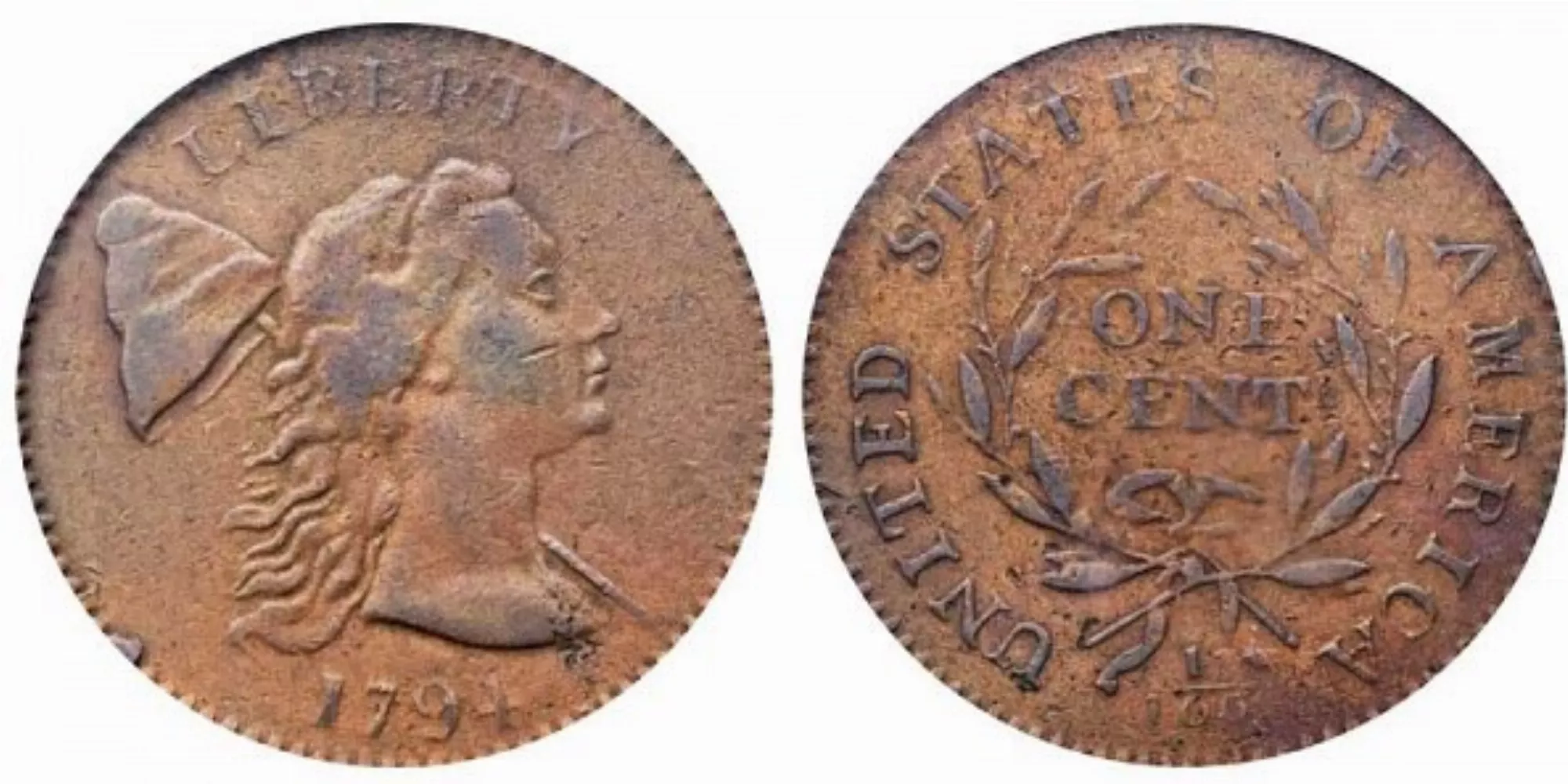
Known variants:

Head of 1793
This variety features the 1793 design of the liberty head on the obverse of the 1794 Liberty Cap Large Cent (Penny). This "head of 1793" features a liberty head with much shorter hair. The details are also softer than the later head designs and has a high rounded relief.
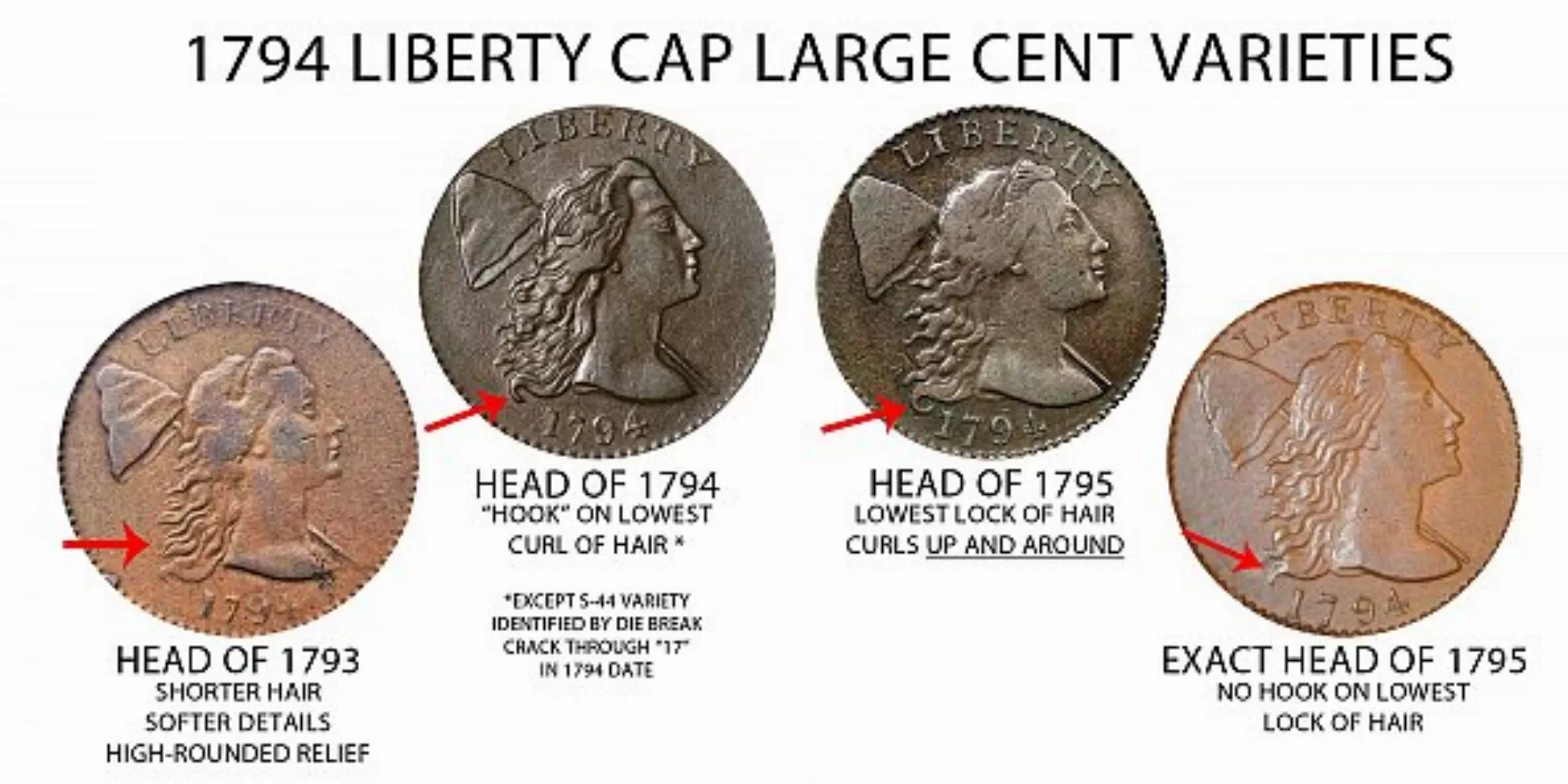
Head of 1794
This variety features the 1794 design of the liberty head on the obverse of the 1794 Liberty Cap Large Cent (Penny). This "head of 1794" features a hooked curl on the bottommost lock of hair on the liberty head as depicted above. There are also numerous Sheldon varieties within this general "head of 1794" variety.
Important Exception: One type of this variety known as the Sheldon S-44 variety does not have a hooked curl of hair. It is often confused with the "head of 1795" which does not have the hooked curl - even major coin grading companies have been confused by this. One way to identify the S-44 variety is to note that a die defect caused a prominent crack through the "17" in the 1794 date.
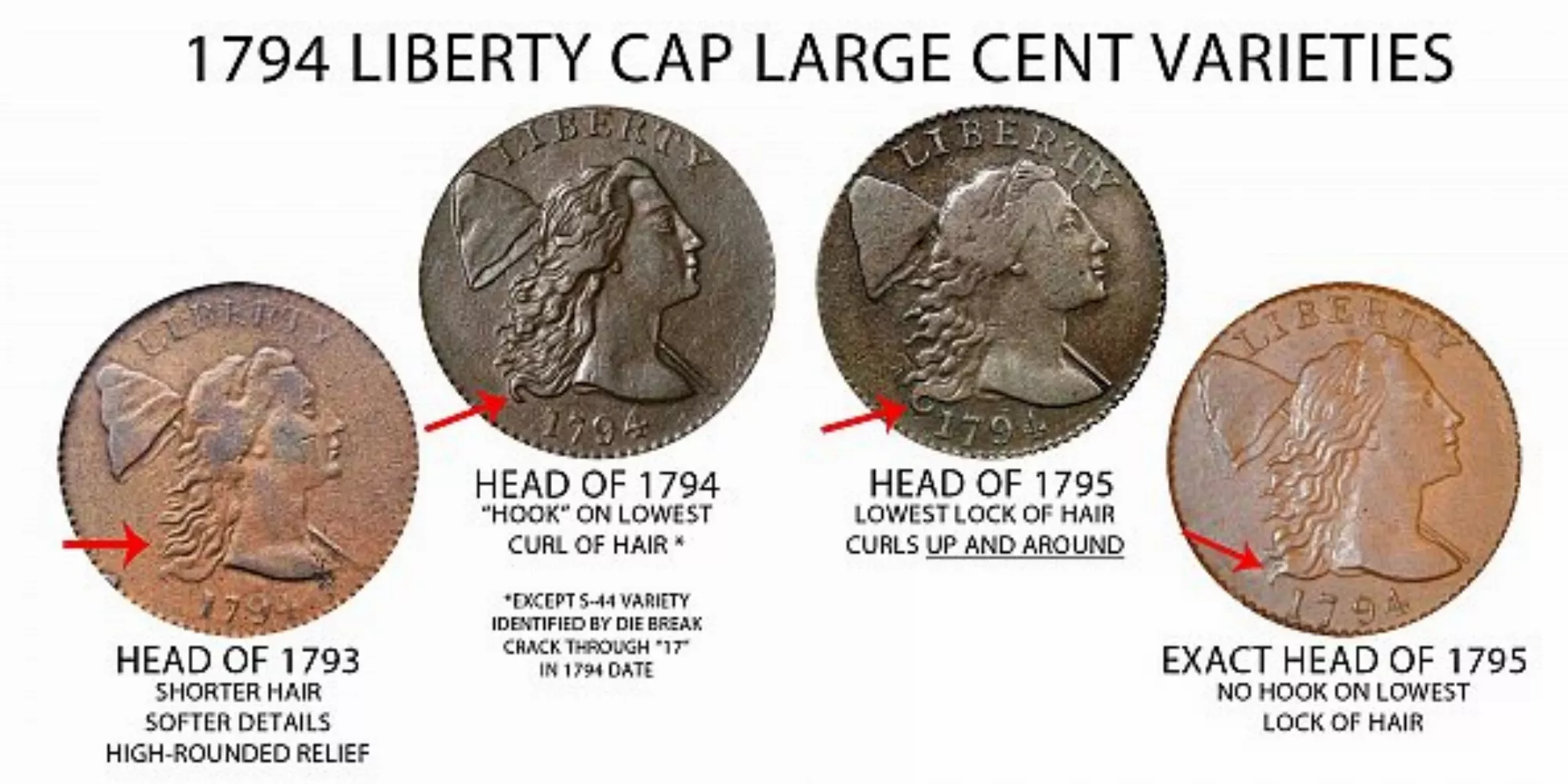
Head of 1795
This variety features the 1795 design of the liberty head on the obverse of the 1794 Liberty Cap Large Cent (Penny). This "head of 1795" features a circular curl of hair that loops up and around as depicted above. This includes the Sheldon S-67 | S-68 | S-69 | S-70 | S-71 varieties. The "Exact Head of 1795" does not have this curl as this is the exact design used during the next year in 1795.
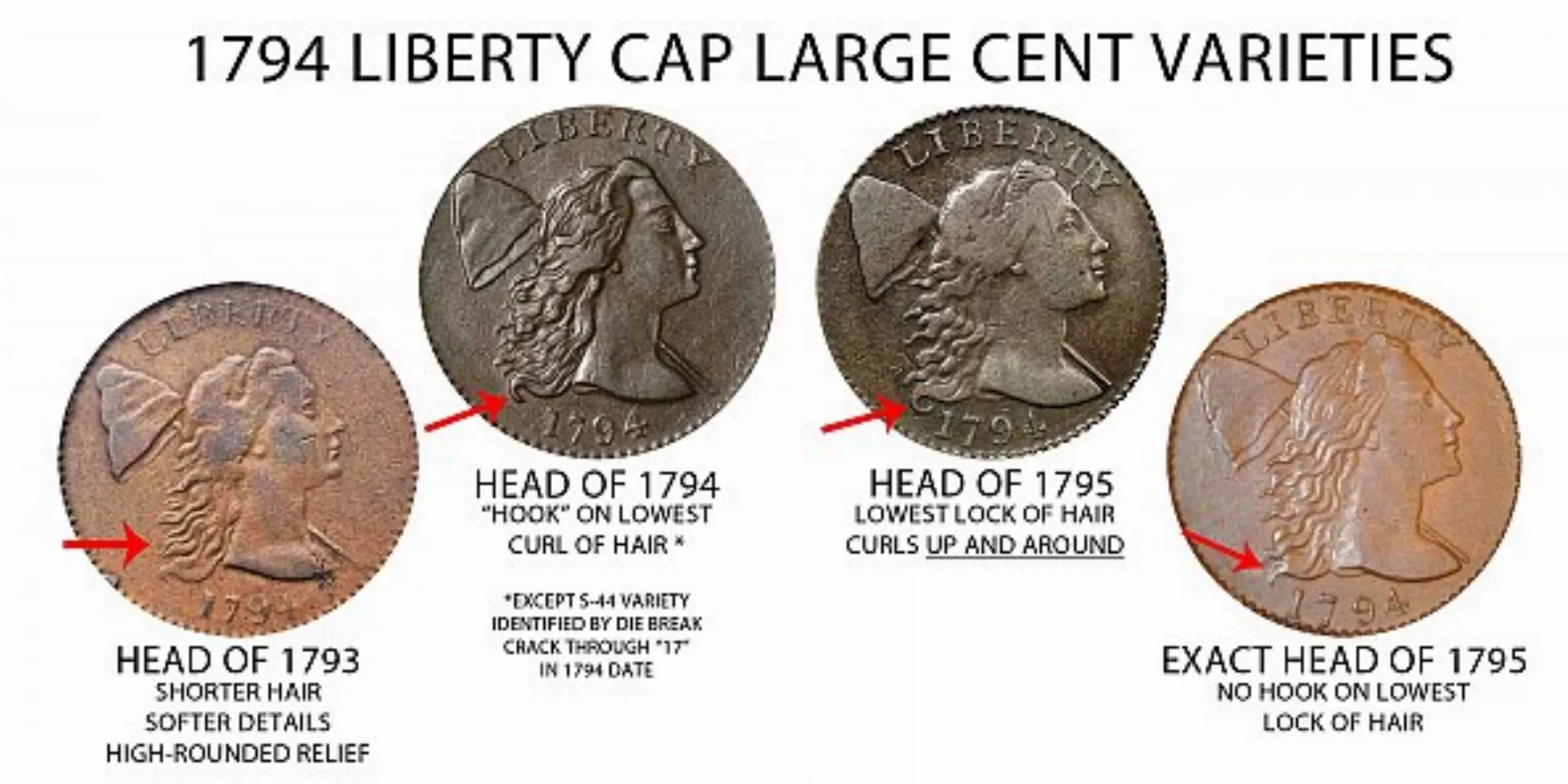
Exact Head of 1795
This variety features the 1795 design of the liberty head on the obverse of the 1794 Liberty Cap Large Cent (Penny). Some "head of 1795" varieties feature a circular curl of hair that loops up and around. The "Exact Head of 1795" depicted above does not have this curl as this is the exact design used during the next year in 1795. This is known as the Sheldon S-72 variety.
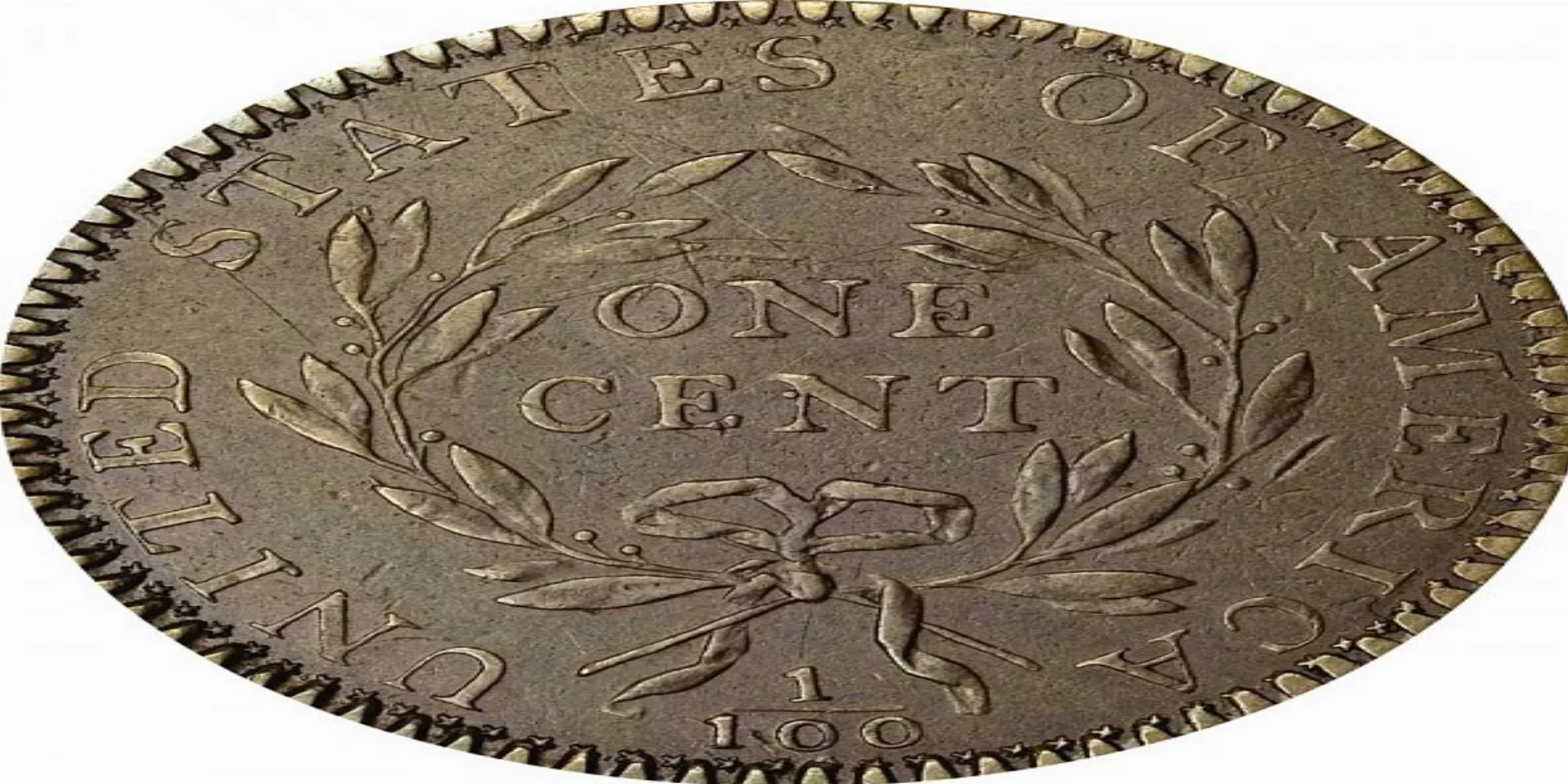
Starred Reverse
Another major variety is the 1794 Liberty Cap Large Cent (Penny) with a starred reverse. This coin features very small stars completely around the rim of the coin near the denticles as depicted above. This is an extremely rare and valuable variety.
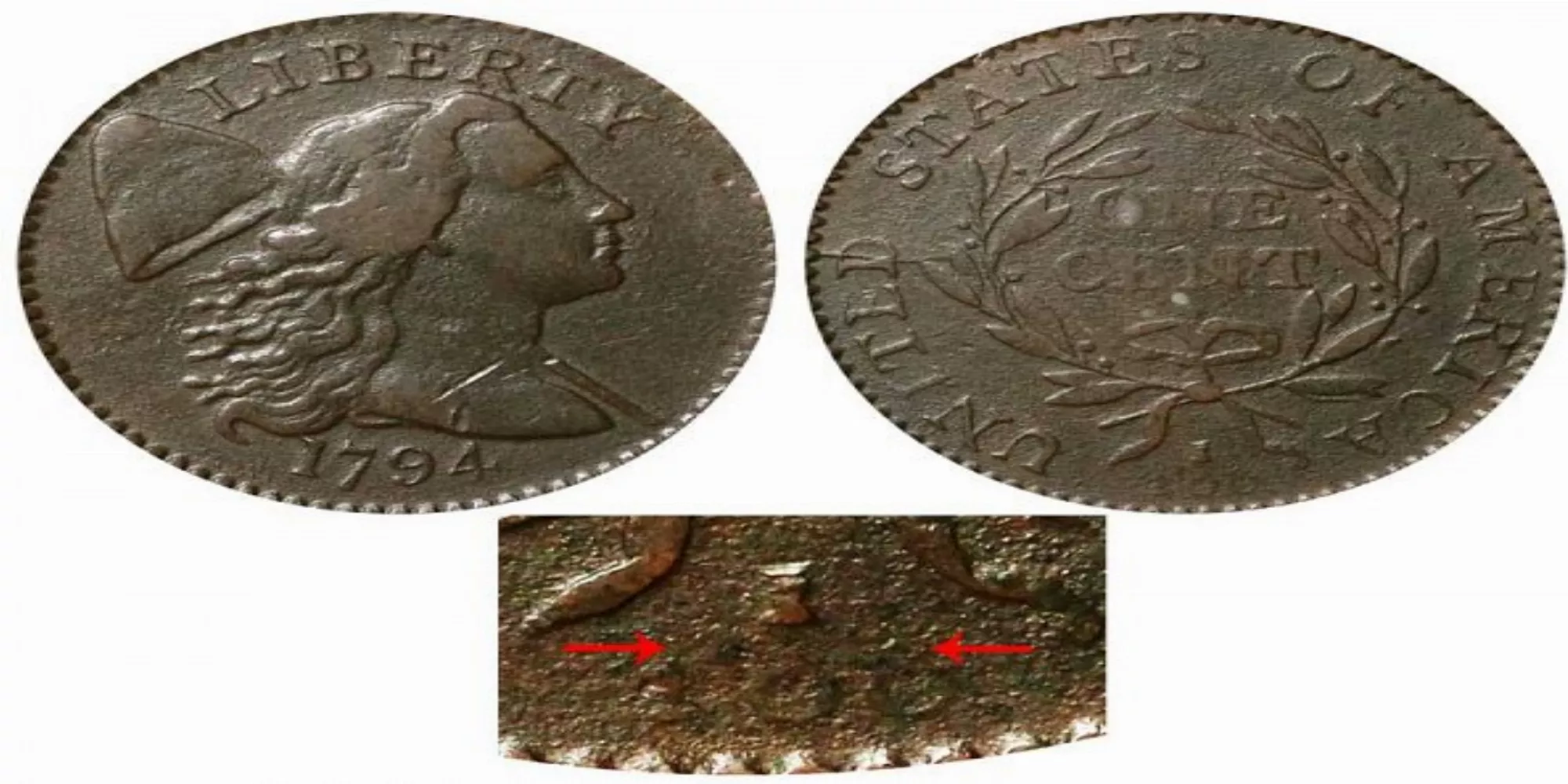
No Fraction Bar
One major variety of the 1794 Liberty Cap Large Cent (Penny) features an error on the reverse of the coin. The 1/100 fraction at the bottom of the coin is missing the fractional division bar between "1" over "100" as depicted above in the example image.